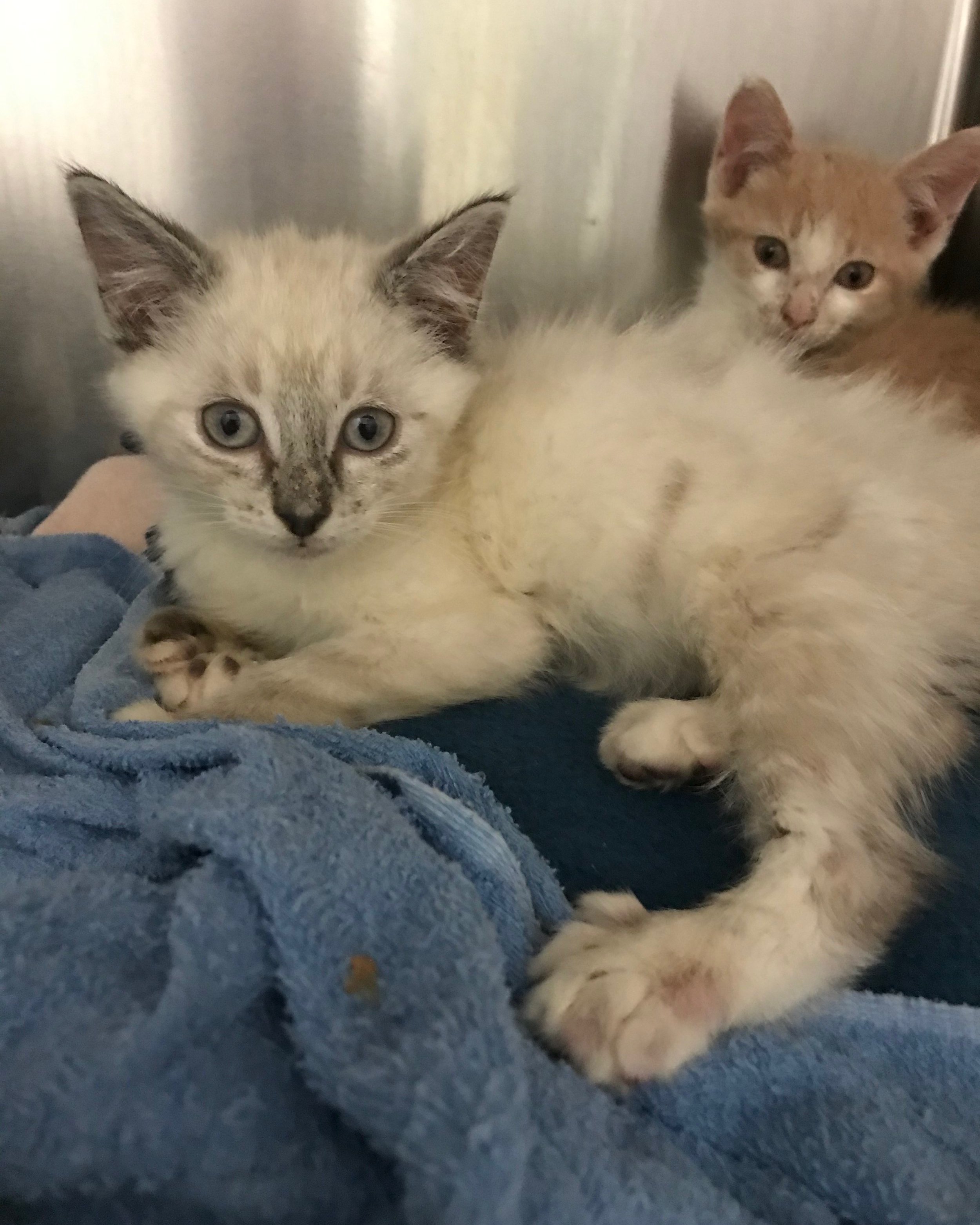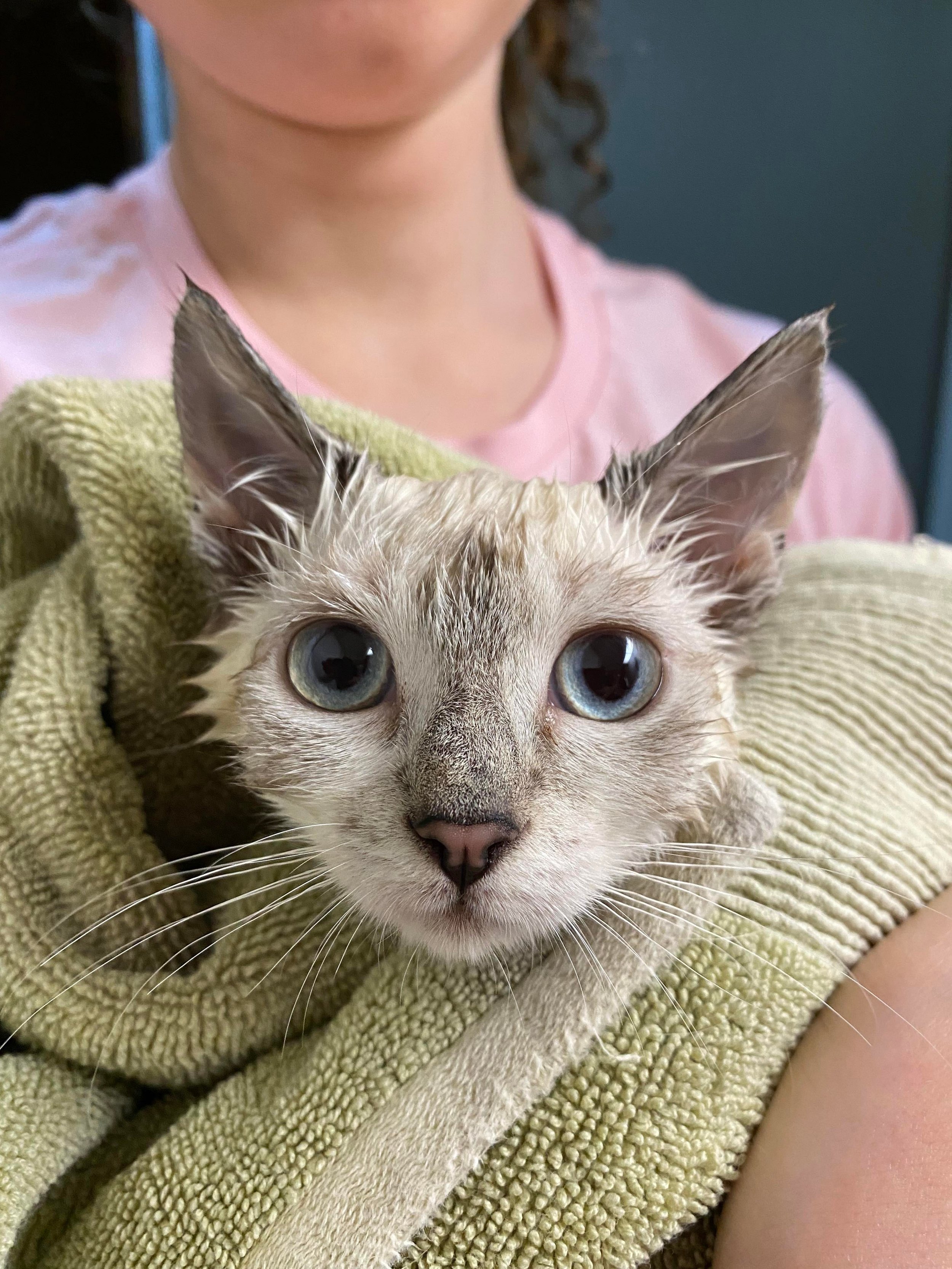There Are No Worms in Ringworm!
The ringworm kittens when they first arrived at Ops
Ringworm is a minor issue with a huge stigma. It’s a very treatable and non-lethal skin condition that’s not as scary as it seems. Looking after kittens with ringworm can seem daunting if you don’t know what it is or how to treat it, but it doesn’t have to be.
Ringworm, also known as dermatophytosis, is not a worm at all, it’s a fungal skin infection that causes patchy fur loss (alopecia) and red, scaly skin that may be slightly raised, sometimes in a round ring. Unlike when it occurs in people, it’s rarely itchy in cats. Not only is this skin condition non-lethal, but it’s also self-limiting, meaning it can cure itself over three to six months as long as the environment is clean and prevents reinfection.
What a patch of ringworm may look like.
At VOKRA we’re currently treating some kittens for ringworm, who just happen to also be polydactyl (i.e. they have more than five toes!). When ringworm kittens stay at our Operations Centre (Ops) it can take around three months to eliminate the fungus as stress directly impacts the immune system. Even though we try to make Ops as friendly as possible for the kittens and cats who stay there, there’s still a lot of noise and disruptions that can go on. When kittens are treated in a quiet and calm foster home environment recovery time from ringworm can be shortened to approximately three weeks.
The kittens in isolation at our Operations Centre
Unfortunately, kittens with ringworm are often euthanized in some shelters because resources are low and treating the kittens takes time, which slows down the adoption process. At VOKRA we believe all cats deserve the chance to heal and live long, happy lives and, as a no-kill rescue, we never euthanize ringworm kittens. We utilize our network of fosters to care and treat the kittens in a home environment to help avoid lengthy stays at the Ops Center.
“Fostering ringworm cats is amazing and makes a huge difference. Recently, I’ve seen fosters heal their cats in under three weeks,” says Kathryn Melnyk, VOKRA’s medical team lead. “Fostering helps cats get better faster, which ultimately leads to more cats being saved.”
Feeding time in foster care
While contagious, ringworm is not dangerous for either cats or humans. The most at-risk groups for contracting ringworm are those with lower immune systems, like kittens, seniors and the immunocompromised. It's more contagious between cats in cattery-like settings as cats rub up against each other and can pass spores back and forth. This is why kittens with ringworm are always kept in isolation.
After working with ringworm cases for a while, Kathryn has put into place new protocols based on research from the University of Wisconsin, “they had the most up-to-date research and we needed to find something to heal these kittens as quickly as possible. We put these protocols into place and it’s made a huge difference in terms of treatment and healing time.”
Treatment consists of three steps:
Drying off after a bath
Daily oral antifungal medication for 21 days
Twice weekly bathing with antifungal shampoo or lime-sulfur spray to kill the spores and sterilize the coat
Twice weekly environmental cleaning and disinfection to prevent reinfection.
For people, treatment can be as simple as using an over-the-counter antifungal which should clear it up in a week or two.
Environmental transmission is low-risk. Ringworm needs to enter humans through a break in the skin. This is why it’s important to keep ringworm kitten’s nails trimmed and it’s recommended two pairs of gloves are worn during their bath time. Washing your hands thoroughly after handling the cat and keeping them isolated in an easy to clean space for the length of their treatment can also help reduce the chance of transmission.
Spending quality time with foster mom Aleina
If you suspect your cat has ringworm you should contact your vet. To keep your other pets from contracting ringworm, keep the kitty isolated in a room that’s easy to clean, such as a bathroom or laundry room. Washing your hands and changing your clothes in between handling pets with ringworm and other animals will also reduce the risk of transmission.
Don’t worry adopters, cats and kittens being treated for ringworm through VOKRA must have at least one negative ringworm culture before being put up for adoption. Viewings can proceed as normal at the end of the cat's treatment.
There’s always time for a quick selfie with foster dad Matthew!







